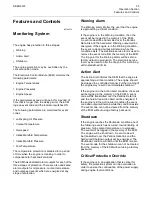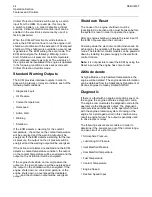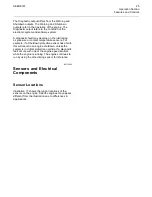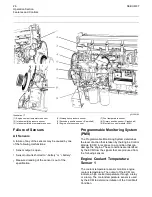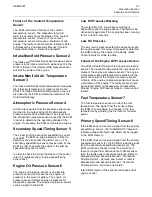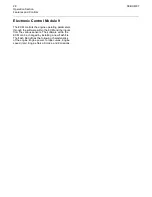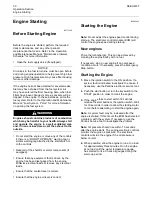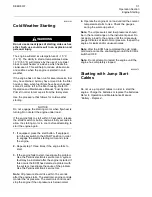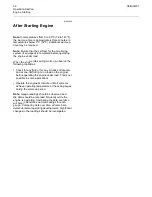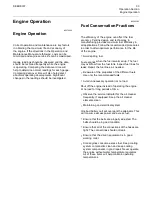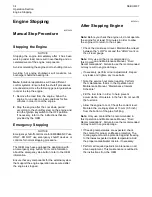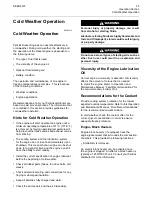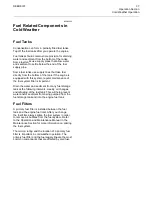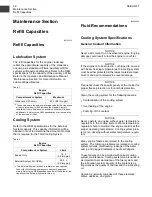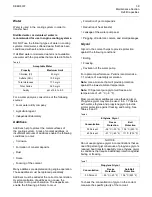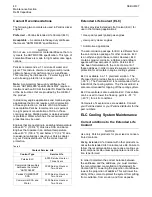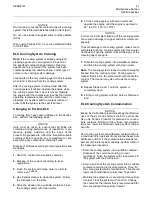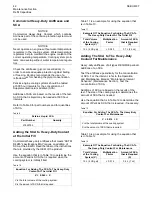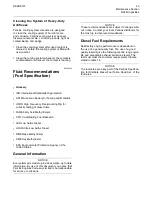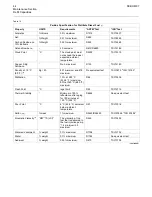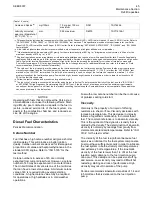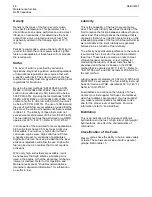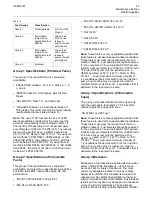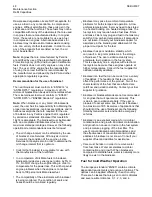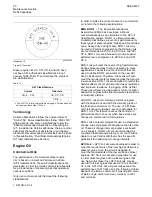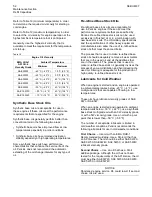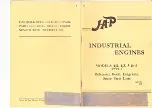
SEBU8337
37
Operation Section
Cold Weather Operation
i02583420
Fuel Related Components in
Cold Weather
Fuel Tanks
Condensation can form in partially
fi
lled fuel tanks.
Top off the fuel tanks after you operate the engine.
Fuel tanks should contain some provision for draining
water and sediment from the bottom of the tanks.
Some fuel tanks use supply pipes that allow water
and sediment to settle below the end of the fuel
supply pipe.
Some fuel tanks use supply lines that take fuel
directly from the bottom of the tank. If the engine is
equipped with this system, regular maintenance of
the fuel system
fi
lter is important.
Drain the water and sediment from any fuel storage
tank at the following intervals: weekly, oil changes,
and refueling of the fuel tank. This will help prevent
water and/or sediment from being pumped from the
fuel storage tank and into the engine fuel tank.
Fuel Filters
A primary fuel
fi
lter is installed between the fuel
tank and the engine fuel inlet. After you change
the fuel
fi
lter, always prime the fuel system in order
to remove air bubbles from the fuel system. Refer
to the Operation and Maintenance Manual in the
Maintenance Section for more information on priming
the fuel system.
The micron rating and the location of a primary fuel
fi
lter is important in cold weather operation. The
primary fuel
fi
lter and the fuel supply line are the most
common components that are affected by cold fuel.

